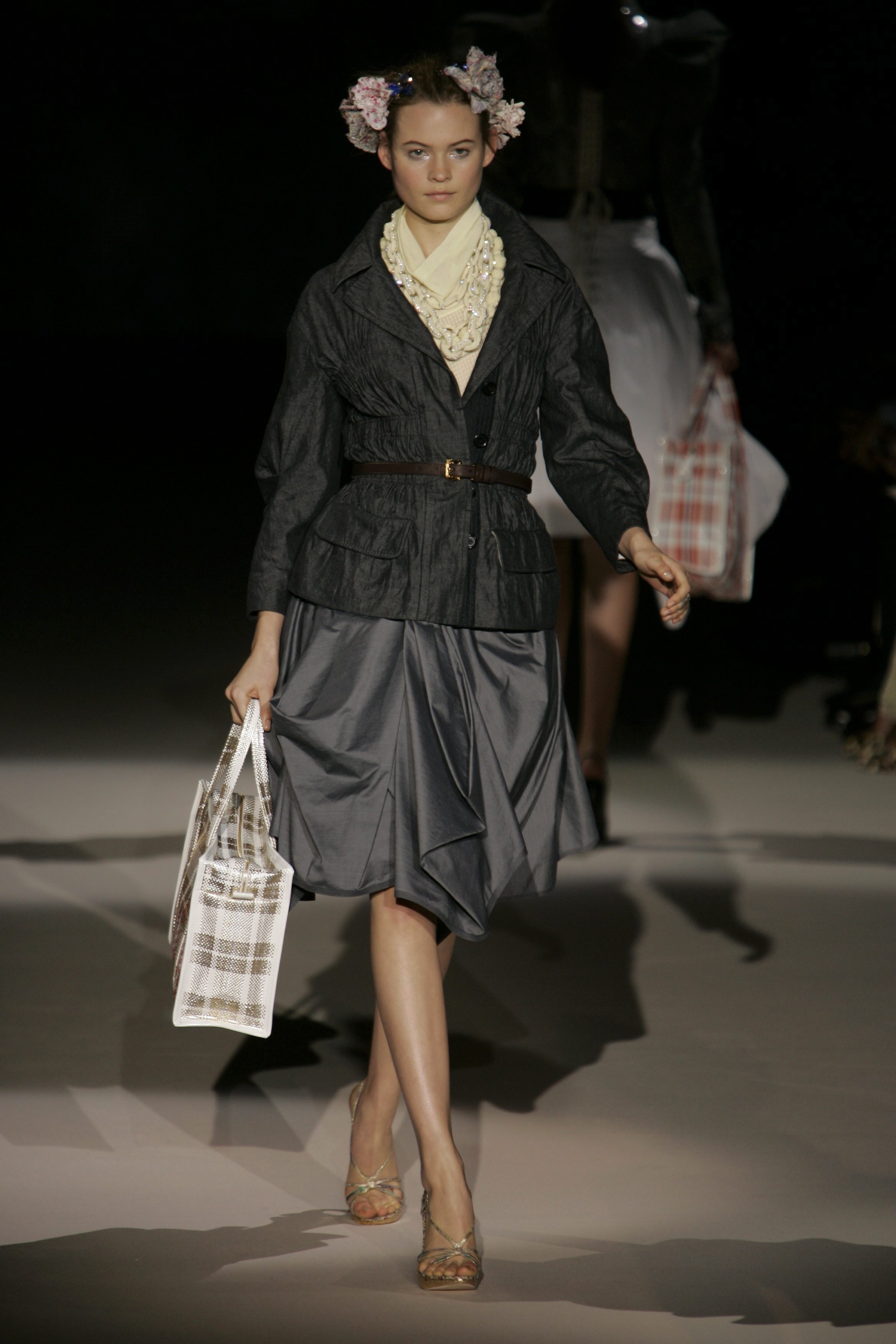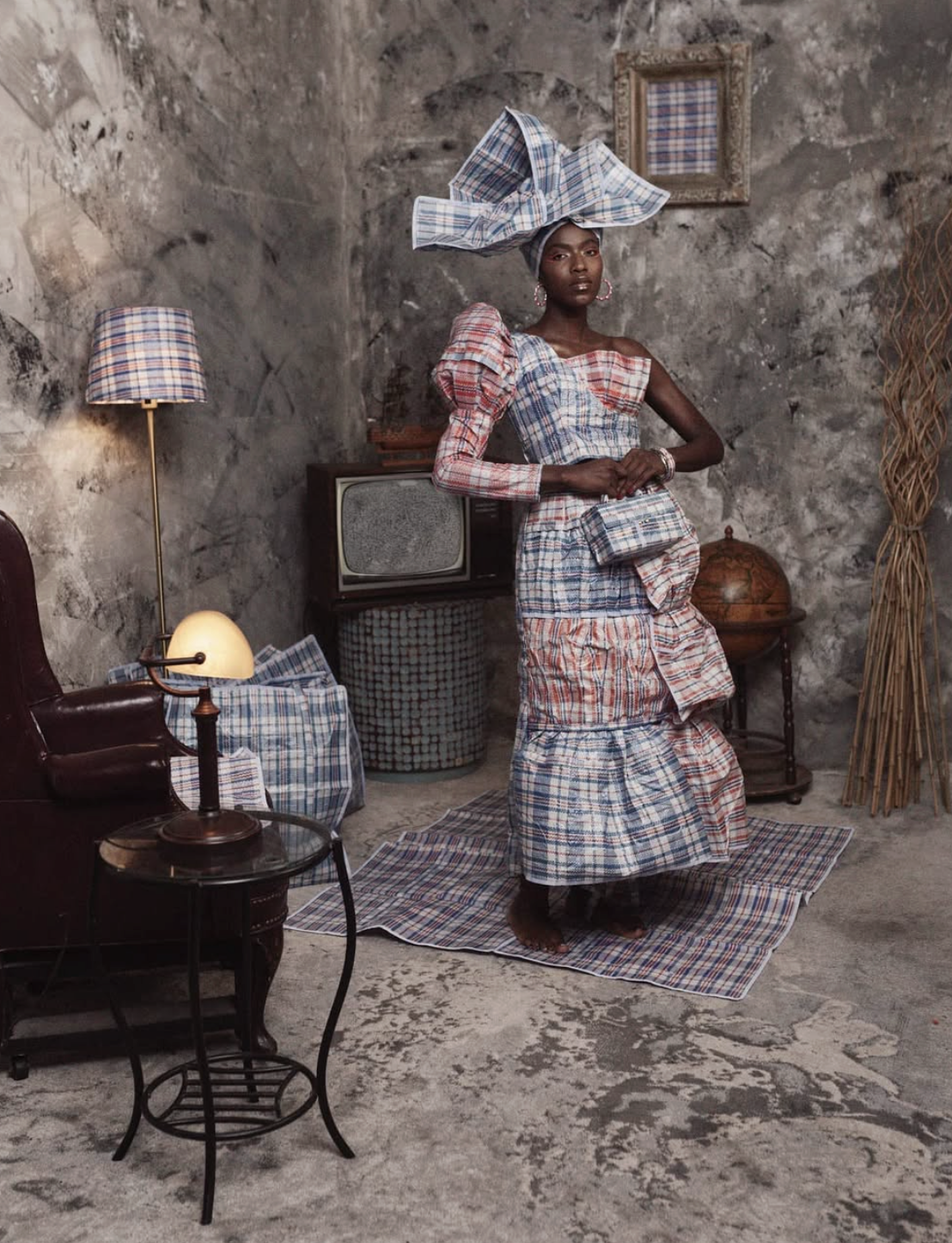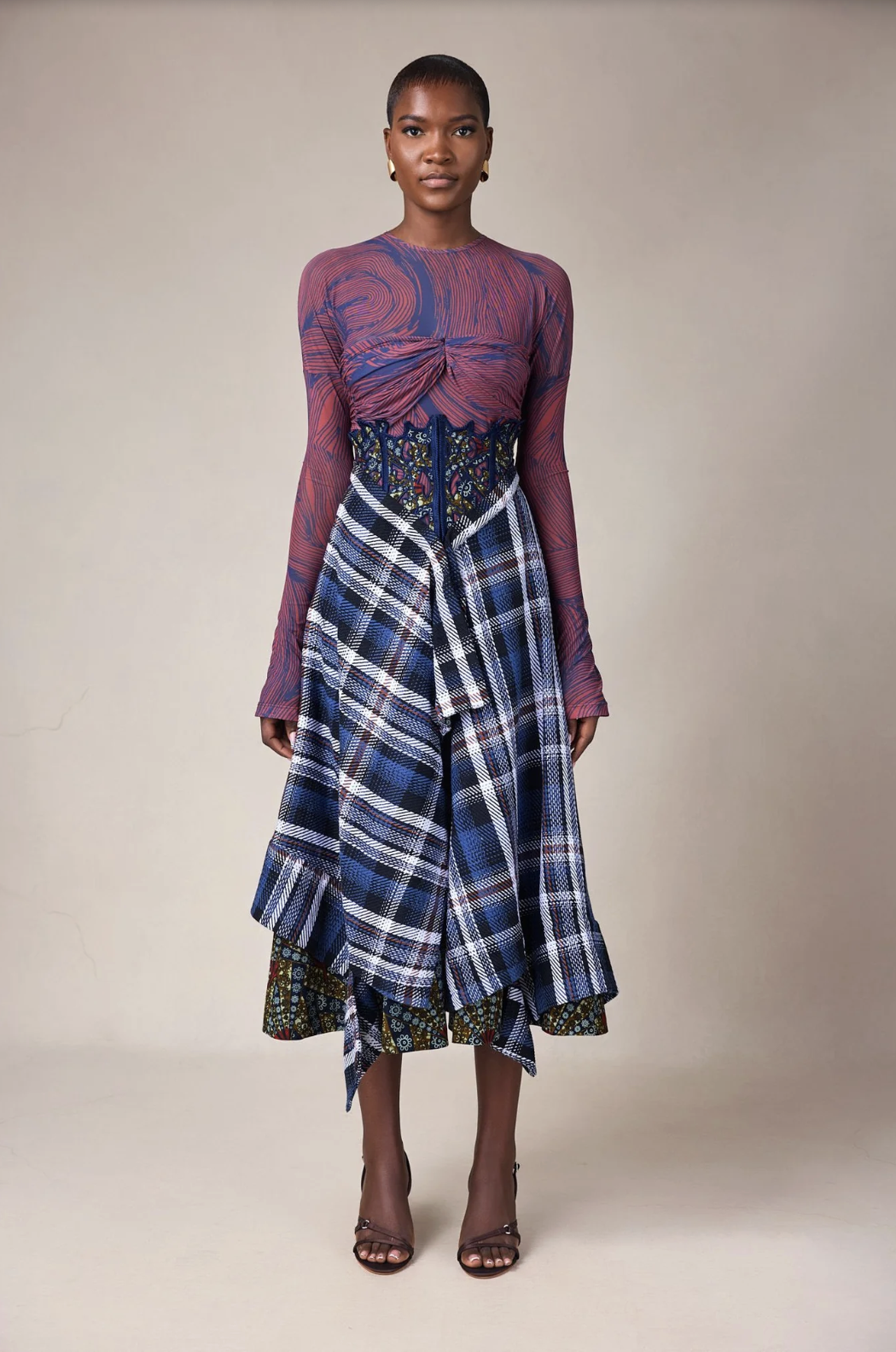The Most Unexpected Runway Inspiration? Checkered Polypropylene Bags, and They Come With a Hidden Meaning

Checks, plaid and gingham are familiar fixtures on the catwalk—just look to the Spring/Summer 2026 collections from Brandon Maxwell, Burberry, Bernadette and Chanel for proof. Yet while inspiration for these patterns comes in many forms, from kilts to picnic blankets, one item in particular is currently front of mind for many fashion fans: the checkered polypropylene bag.
You know the ones—big, plastic, and instantly recognisable with it's checked pattern. You might have seen them at your local market or piled high at your nan’s house, if yours is anything like mine. Otherwise, you may know them as a “Ghana Must Go”—a name that will bring up countless results on Amazon, though is now being questioned for its continued appropriateness.

Bernadette, Burberry, Chanel Spring/Summer 26
Right now, the bag’s distinctive check pattern and its frequent appearance in fashion are drawing renewed attention. This is largely thanks to the resurfacing of Louis Vuitton’s Spring/Summer 07 reinterpretation, which is currently reselling for around £1,600—a far cry from the £2 non-branded versions found in markets and corner shops. Add to that the flurry of similar checks and colourways on the Spring/Summer 26 runways, and it’s clear this humble pattern has become a talking point once again.
The reason this particular print holds such an emotional tie? It’s steeped in complex history. "For some, it is painful reminder of the 1983 mass expulsion of Ghanaians from Nigeria following the oil crash," explains celebrity stylist, editor and fashion expert Marian Kwei, noting how these bags were often used to hastily pack up belongings during that time.

Louis Vuitton Spring/Summer 07
"Being of Ghanaian heritage I know that for many there are mixed feelings with regard this affordable carryall bag, for those who find it painful it is a reminder of the confusion, displacement and enforced expulsion from Nigeria and the alienation felt," she continues.
"For others, it has come to connote an inexpensive, resilient, easy to attain carryall that encapsulates the movement of people and the carrying of goods and items," she adds, noting that the bag is known by various names across Africa and the rest of the world.

Òbìnna Òbíòmà Anyi N’aga (We Are Going)
Today, however, the pattern has been reclaimed by African designers and creatives. Visual artist Òbìnna Òbíòmà created an entire shoot, Anyi N’aga (We Are Going), using the bags to craft a full outfit and set. "Through fashion, we are both expressing ourselves and hiding something at the same time both metaphorically and physically. The 'Ghana Must Go' print captures that duality perfectly: it holds the memory of displacement while also celebrating movement, identity, and renewal," he shares. Adding, "Over time, it has transformed from a marker of hardship into an emblem of cultural reclamation and pride".
Celebrity news, beauty, fashion advice, and fascinating features, delivered straight to your inbox!
Wanda Lephoto built their Home Affairs Spring/Summer 22 collection and Our People collections around the theme of cultural inclusion and belonging, using the bags as a central motif. And artist Abdur Rahman Muhammad immortalised them in oil in his The Allegory of a Seeker exhibition.
Aisha Ayensu, founder of Christie Brown, also referenced the pattern throughout the Autumn/Winter 25 collection. “For me, the checkered polypropylene bag print has always been more than just a pattern. It holds memory, history, and the lived experiences of migration and resilience, especially tied to the ‘Ghana Must Go’ story," she says. "When we referenced it in Christie Brown’s Fall 25 collection, it wasn’t about aesthetics alone. It was about reclaiming something once seen as ordinary or even stigmatised, and reframing it as a marker of strength, adaptability, and identity".

Christie Brown Autumn/Winter 25
"The print has indeed gone from being a symbol of displacement and resilience to the mainstream," notes Kwei. Meanwhile, Idelle Taye, founder and CEO of Guzangs, a magazine spotlighting African style, reflects that “it’s one of those prints that tells a full story without words. What was once seen as ordinary or even disposable now sits in a luxury context—and that shift says a lot about who gets to define value in fashion.”
Òbíòmà adds, "What’s powerful about seeing this pattern on international runways today is how it speaks to the cyclical nature of cultural exchange where something once stigmatised is now reimagined as high fashion. African designers have been instrumental in reframing the narrative, using the print as a statement of ownership and reinterpretation. It represents how we reclaim our stories, our aesthetics, and the power to define what beauty and value mean on our own terms".
However, Ayensu stresses, "to see it now on global runways is powerful, but I do believe fashion has a responsibility here: not to erase its roots, but to honour the culture and stories it represents".
A post shared by Simon Says Drip (@simonsaysdriphq)
A photo posted by on
Where the print truly found resonance in mainstream luxury, however, was through Virgil Abloh’s (of Ghanaian descent) Off-White x Free The Youth (a Ghanaian youth collective) collaboration—where the print was used across bags and T-shirts. Its meaning and cultural significance fully appreciated.
It’s this sense of historical and emotional recognition that fashion fans now want to see from luxury labels—whether through collaborations with African designers and artists, acknowledgment of the print’s roots, or active support for emerging talent continuing to tell its story. "Now that is the beauty of design when it’s done with intention—it becomes a bridge between the past, present, and future," adds Ayensu. Designers who are planning on using it best take note.
marieclaire




